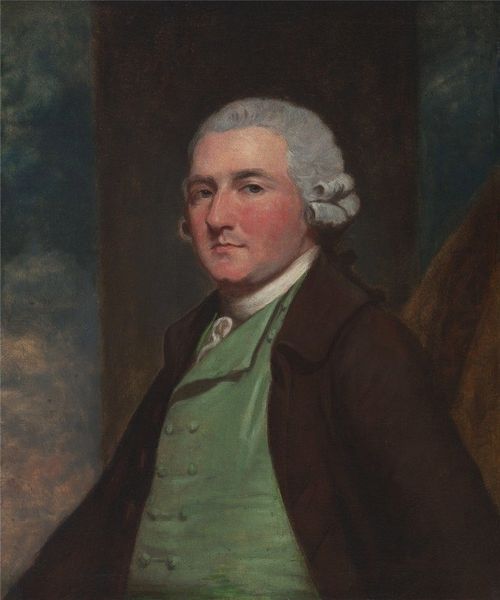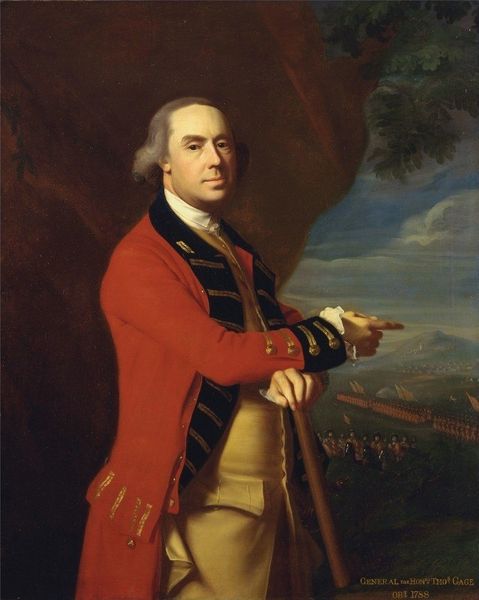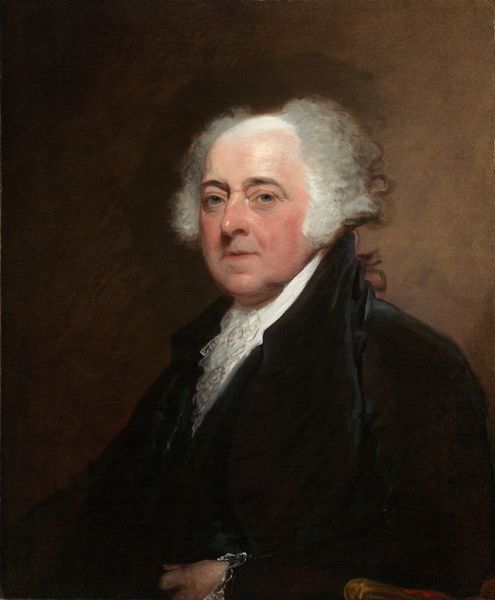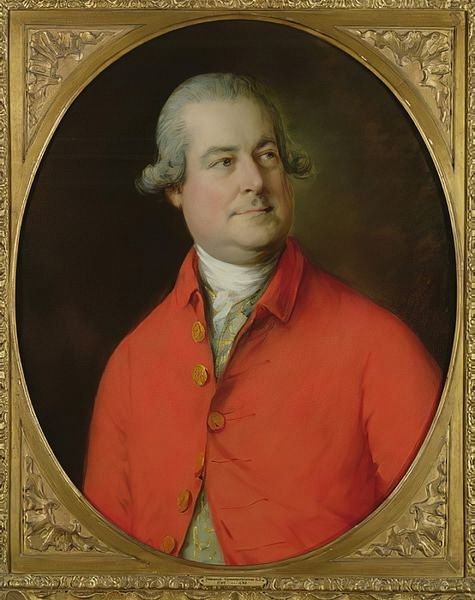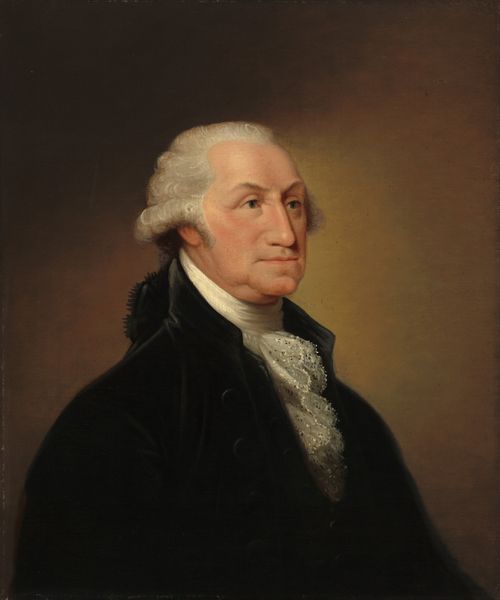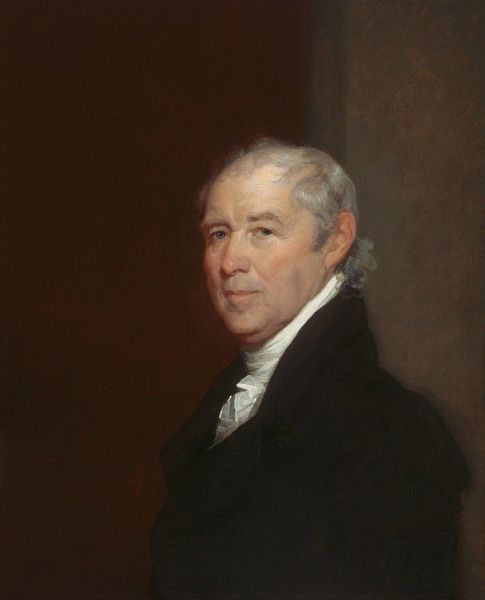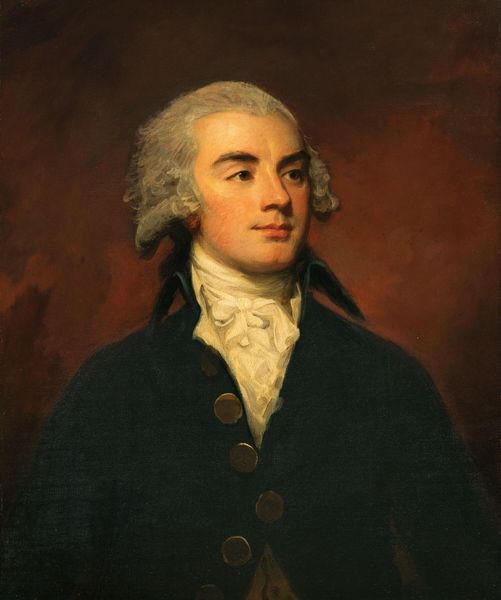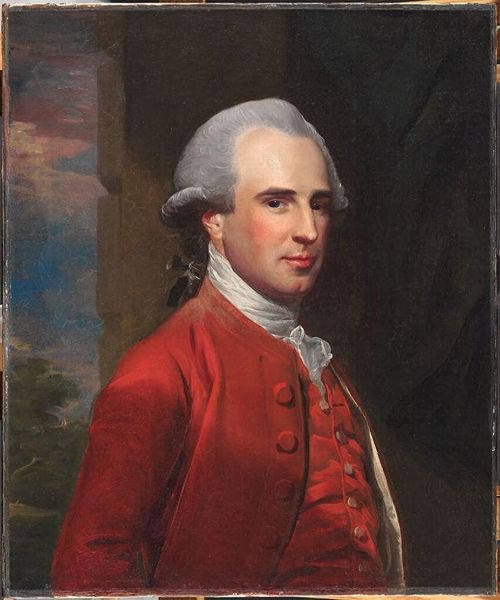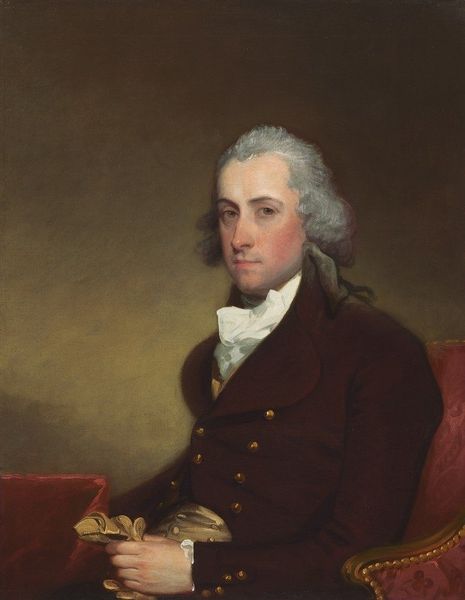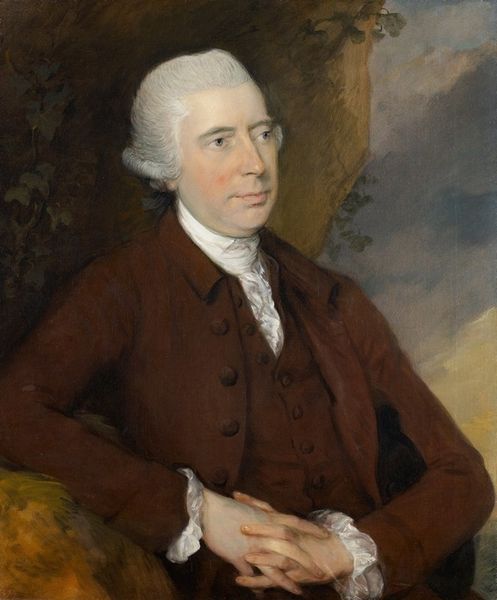
Copyright: Public Domain: Artvee
Curator: This is John Singleton Copley’s portrait of Robert Hyde, Squire of Hyde, painted in 1778. It’s rendered in oil paint. What’s your first take on this, given your materialist leanings? Editor: Immediate thought? The crimson coat pops, and the buttons, they just demand attention. I’m intrigued by what they’re made of, who made them, and how they ended up gracing this particular gentleman’s attire. There’s so much labor history tied to just that small detail. Curator: Absolutely. And doesn’t the overall effect just scream ‘establishment’? I find his gaze unsettling, almost as if he’s judging me for not knowing which fork to use at dinner. But there is this humanity in the set of his jaw… a stoicism maybe, or perhaps even repressed anxiety? Editor: See, that’s where my mind goes. All these layers of fabrics, the dye, the stitching of that lace cuff, it is literally “screaming establishment”, that requires labour and wealth disparity. How many working hours is captured in the very presentation of the squire? What sustained those skilled labourers? What were the socio-political impacts of such elaborate garments? Curator: Well, think about it—Copley was quite astute at capturing the nuances of class and status in his portraits, but he also did not fail to emphasize individual character and humanity. Those fine clothes and decorative touches communicate wealth, power, and trade, of course. I think Copley sought, however subtly, to look for what might crack through the gilded surface, the tension or fragility behind a person. Editor: Precisely! And even if unintentional on Copley's part, or even Mr Hyde's, the material choices and construction methods still reveal stories of labour, global trade, and the era’s social hierarchies that transcend intention. Every fabric tells a tale! Curator: Indeed! Looking at "Robert Hyde, Squire of Hyde", my perception always revolves around the story, as if there is some element that’s out of my grasp, while you find that there is a wealth of information that already exists in front of you. Editor: And, likewise, when I look at Mr Hyde's portrait through the lens of textiles, that material reality invites consideration of its effects, so thank you.
Comments
No comments
Be the first to comment and join the conversation on the ultimate creative platform.
